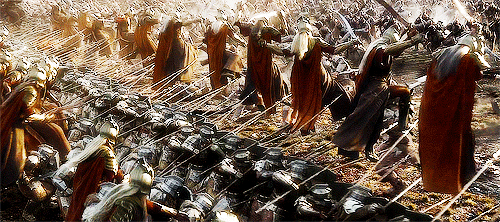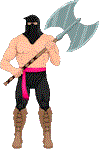The European Serin On Tour - Part 1
Open Period ADLG at The Worlds in Spain 2025
Khurasanian vs Ghaznavid
Game 1 Khurasanian vs Ghaznavid
Game 2 Khurasanian vs Ottoman Empire
Game 3 Khurasanian vs Mongol Empire
Game 4 Khurasanian vs Wars of the Roses
Game 5 Khurasanian vs Mongol Empire
Game 6 Khurasanian vs French Ordonnance
Or, for our many foreign readers ..
** Game 1 Khurasanian vs Ghaznavid - In Spanish! **
** Game 2 Khurasanian vs Ottoman Empire - In German! **
** Game 3 Khurasanian vs Mongol Empire - In Portuguese! **
** Game 4 Khurasanian vs War of The Roses - In Spanish! **
** Game 4 Khurasanian vs Mongol Empire - In Spanish! **
** Game 4 Khurasanian vs French Ordonnance - In Australian! **
This year the second big international event of the ADLG Calendar also took place in one of CLWC's favourite wargaming destinations - Spain. This time the competition was The Worlds, and was being held in a commuter town on the outer edge of Madrid, plonking the event, and our arrival airport, right in the middle of an absolute cornucopia of military-themed tourism options!
That all meant an extended trip - more of which later - which started with Toledo, home of the unmissable Alcazar military museum and site of our first of many subsequent encounters with the European Serin.
Next up was Madrid, the Museum of Ham and the National Archaeology Museum which houses the oldest known statue of Princess Leia from Star Wars ever discovered.
Eventually the Central London Collective assembled in motorway-adjacent the town of Villalba Collada (or something) to settle down to the actual gaming part of the weekend, having been fully satiated with sun, culture, history, jamon, Rioja and beer, as well as a new-found appreciation for the somewhat brusque birdsong of the Red Beaked Chough
In gaming terms I had chosen to go with a Khurasanian army, mainly on the basis that I have gotten into a habit/routine/rut of taking it to the Worlds for the last few years in my "Better to lose like Jimmy White than win like Steve Davis" philosophical approach to supposedly top - tier ADLG gaming.
It also has an elephant and good shooty cavalry which can neutralise enemy knights, a Dailami ally which gives it enough punch to deal with infantry opponents as well as (in this incarnation) the combination giving it enough toys to go toe to toe with mounted armies too. Oh and no - one else takes it as basically its a slightly toothless Ghaznavid army.
In previous Worlds events it has been allowed to take 2 different versions of the same army list, and I had in the past used a Abbasid ally with the Khurasanians to give me a dedicated anti-steppe-opponent army list with more cavalry and shooting at the expense of the elephant and Dailami, but this event was only a single list meaning I did have to tweak the "Dailami" list a little.
This iteration therefore had one less Dailami warrior in the allied contingent, but somehow managed to squeeze in a couple of infantry bowmen and an extra Light Foot or two as well, requiring the list to work as a better all-rounder against all-mounted opponents and also have more screening light troops to ensure the reduced number of "Dailami plus elephants" could get into any enemy Longbowmen or other sustained shooters without taking too many hits along the way as they would now sit behind a more robust skirmish screen
With all of that faffing around long since done and dusted, I therefore sat down in the first round to find my "slightly toothless Ghaznavid army" facing, erm, an actual Ghaznavid army!
The Ghaznavid list is a classic regarded as being at the upper end of the curve, as is befitting given the success and scale of their Empire in history.
A strong combination of good quality horse archers, dangerous infantry, Dailami, and especially a bucket load of elephants with the option in some periods to give them Armour makes this a well rounded list that even as I write this I wonder why I didn't just bite the bullet and pick it myself.
The big challenge with Ghaznavids is the size of the army, with lots of expensive but high quality toys and relatively few filler troops with utility, a combination which often sees the Ghaznavid elephants discarding their armour to eke out a few more skirmishers or light horse to bulk out the break point of the overall force.
The lists for the Khurasanian and Ghaznavid from this game, as well as all the other lists from the games at The Worlds in Spain can be seen here in the L'Art de la Guerre Wiki.
The first battle was taking place on the terrain board of the hosts, complete with markings for deployment areas and the half way line which seem to have come out more boldly in my photos than I remember being the case in real life!
What looks to be two fields chosen by me bracketed the enemy army, with the Khurasanians opting to open the weekend's batting with an unambitious "refused centre & strong wings" gambit which saw the large Death Star command on the left and the Dailami ally on the right, both facing the cavalry-repelling terrain of the cultivated fields.
The third, "small enough to flank march if needed" mostly - mounted command (with a couple of spearmen as well) ie therefore left floating in the centre.
The military of the Ghaznavid Empire was one of the most formidable forces in the Islamic world during the 10th and 11th centuries.
Founded by Sebuktegin and greatly expanded by his son Mahmud of Ghazni, the Ghaznavid military was a powerful and highly organized machine which relied heavily on Turkish slave-soldiers (ghulams), elite cavalry, and a well-developed logistical network.
The empire's mounted archers, trained in the steppe traditions of Central Asia, were particularly effective, allowing for swift, mobile campaigns across vast territories.
A hallmark of the Ghaznavid military strategy was its capacity for rapid and destructive raids, particularly under Mahmud of Ghazni, who conducted numerous campaigns into northern India. These invasions were not only military ventures but also religious and economic in nature, aimed at weakening Hindu kingdoms and seizing their wealth.
This Ghaznavid army was unusually constructed, with a big block of supported spearmen appearing just left of centre, acting as a counterbalancing anchor to the far more usual Elephants & Dailami setup to their right.
On the Ghaznavid right a command with a lot of Light Horse screened the table edge, supported by a block of Ghulam cavalry who were starting the game butted up against the elephants in order to avoid being pinned in the ploughed field by any sort of rapid Khurasanian advance.
L'Art de la Guerre hint - Playing abroad is great. Not just because of the weather, great food, cheap beer, lovely wine and opportunities to visit loads of interesting castles and military museums, but also because you get to play people who's army design and tactical choices have evolved completely outside of your own local "meta".
It's not uncommon therefore to be surprised at deployment by what can seem to you like an unusual list composition - and then also be surprised by the way it actually works as well!
With these matchups and this terrain the game plan was set. I would look to sweep round both flanks whilst holding back some of the Khurasanian mounted in the middle as a reserve to threaten the Ghaznavid centre should it become strung out, assuming that both their Elephants and Spearmen would attempt to wheel outwards to face my twin flank assaults.
The 2 Crazy Ghazi infantry in the Khurasanian CinC's Elephant command were also to be left behind as a reserve (as their impetuosity might well prove a liability if they were added to the front line with so many elephants, Dailami and Cavalry in front of them), as were a couple of spearmen in the otherwise all-mounted centrally deployed command
The Dailami, ever unruly sons of the northern highlands, had awoken that morning with fire in their bellies and far grander visions than mere survival.
Whether spurred on by dreams of silken tents and golden coin, or the whispered promises of some minor princedom nestled in the embrace of a lush valley - complete, of course, with the Khurasani Emir's elusive inshā'Allāh of patronage - they surged forward with ambition gleaming in their eyes like the morning sun on drawn scimitars.
Across the field, the Ghaznavids - those disciplined sons of Ghazni - had positioned themselves with calculated confidence. Their left flank lay cushioned behind a wide belt of churned, muddy farmland - a patch of terrain so inimical to cavalry that one could practically hear the hoofbeats squelch in protest.
Clearly, their generals had leafed through the dusty footnotes of the Khurasani order of battle and, expecting a tide of sleek, all-mounted Arab-style riders, thought themselves safe behind this mire of peasantry and ploughshares, confident it would blunt the sabres of any over-eager desert cavalry.
Unfortunately for them, the Khurasani order of battle came with a Dailami asterisk!
But ya khabar aswad!, what terror then to see the Dailami advancing not on horseback, but on hardened foot, like wolves bred of rock and rain.
For these hill-born warriors did not merely tolerate the uneven ground, they thrived in it. With their curved blades drawn and their shields beaten into thunder, they moved across the rutted field with the grim joy of men born to such chaos.
“Wallah, this is not mud," laughed one grim-faced Dailami veteran as he skipped over a rut, (“this is mother’s milk to us men of the Iranian hills!")
To the Ghaznavids, it must have seemed as if the very earth had betrayed them - offering no defence against warriors who charged not in orderly lines but in a joyous, howling avalanche of ambition and iron. The ground they had counted on to bind and slow had instead whispered blessings to the feet of the Dailami, who came not as guests, but as claimants of land, of gold, and of glory.
On the left the Ghaznavid cavalry had shaken themselves out into more of a coherent line as they advanced past the terrain, but the Khurasanian Elephant, Ghazi and Dailami were drifting leftwards at an even faster pace as their accompanying bowmen quickly targeted the thin screen of Ghaznavid light horse archers in what was shaking out to be an ongoing yet somehow still tentative waltz of tusk and stirrup.
With only unmaneuverable elephants and slow moving infantry spearmen in the centre to face, the third command of Khurasanian cavalry decided it was not really going to wait long enough to act as a reserve and instead moved up smartly to face off against the Ghaznavid horsemen
This left just their two spearmen to make up the entire centre of the Khurasanian line whilst piling 2 commands worth of combat and shooting pressure on the Ghaznavid right.

Mahmud’s raids into India, including the famous sack of the Somnath temple, brought enormous wealth to Ghazni and helped finance his empire and military apparatus.
During the Ghaznavids expansions into the Indian subcontinent, especially the lush and spice-laden Kashmiri region, they encountered not only increasingly stiff military resistance but also rich culinary traditions.
Kashmiri cooking with its aromatic blends of saffron, chili, and mysterious gravies in which supremely chunks of lamb often simmered like dhows in an Arabian harbour, proved irresistible to the seasoned Ghaznavid commanders, who had always liked a good curry after a big night out anyway.
The Dailami were seriously considering giving up the whole "war" thing for a life of pastoral horticulture by this stage of the game, as they marched forward and drifted away from the Ghaznavid spearmen to take control of ever greater swathes of prime agricultural land.
The Ghaznavids threw out a couple of Light Horse archers to try and slow these agrarian developments, but they soon came under long ranged fire from the unit of archers I'd shoehorned into the Dailami ally in anticipation of them having to deal with exactly such a distraction at some point in the weekend.
The battle on the Khurasanian left was fast turning into a race to the left as both armies sought to get their good quality cavalry horse archers and elephants into action.
Here again the addition of an archer to the Khurasanian roster was paying dividends, pinging long range damage into the Ghaznavid skirmishing horse archers who struggled to respond meaningfully when faced with a larger than usual screen of defensive skirmishers covering the Khurasani elephant
Who would blink first, falter first or charge first?

The Ghaznavids
In a move which will surprise almost no-one who has ever read one of my battle reports before, the first charge came from the Khurasanian Elephant & Dailami Death Star, causing Ghaznavid cavalry to skitter away in panic at the possibility of having to take on such a potent mix of foes so early in the game.
This forward lurch had instantly created a gaping hole in the Ghaznavid line, which in turn allowed clouds of Khurasani light infantry skirmishers to abandon their role as ablative shields for the Elephant and Dailami and instead gleefully join in the shooting against the Ghaznavid mounted troops who had not been targetted by the Elephants charge.
L'Art de la Guerre hint - Taking the LI away from their screening role does leave the elephant somewhat exposed should the Ghaznavid cavalry return to shoot it, but by using two of the LI to support the shooting of my foot archers and Ghulam cavalry may give me a decisive advantage in two places in the ongoing exchange of arrows.
As all of the proper cavalry and infantry on both sides are by now at eyeball-staring distances to one another, the LI bowmen can also position themselves ready to provide combat support to my proper combat units without any risk of being charged away by enemy heavy troops - this getting double utility out of these very cheap light units.
If that means the Elephant might take a hit in a future turn, so be it.
The Dailami had by now driven off the Ghaznavid horse archers, and were wheeling round in anticipation of a dramatic zupin-throwing assault on the Ghaznavid spear line in which they would have the upper hand in both quality and combat effectiveness. Which, technically might mean using both hands rather than just the one I guess?

“By the beards of the ancients!" cried one shaggy old Dailami captain, tearing across the field like a lion blessed by the fire of Farr-e Izadi. “Today we carve our names into the very ribs of history!"
Three spearmen faced three Dailami warriors - but the Dailami also had their archer, who was now tasked with pinging off some damage from the enemy spearmen before combat occurred to try and tip the scales even more in their favour.
Making up the rest of the imbalance, a cavalry lancer lurked on the far right ready to rush in an provide an uncontestable overlap for the Dailami foot, whilst even the pedestrian spearmen of the "refused centre" Khurasani command were slowly girding themselves to try and contribute on the other end of the line as well
Chroniclers remain divided on whether it was the strategic value of the Kashmiri region or the heavenly allure of rogan josh and gustaba that most excited Mahmud of Ghazni when he opted for an eastwards expansioinary policy for the fledgling Ghaznavid Empire.
Recently translated ancient texts strongly suggest that his soldiers had already reportedly began demanding longer rest periods when campaigning each spring near Srinagar, citing "tactical digestion considerations" after particularly heavy meals, which together with the emergence of repeated geometrical patterns thought to be based on chapatis and dhosas in Ghaznavid art around this time all seems to point in one very spicy, often lamb-based direction for what was really driving the Empire's expansionist tendencies.
With Khurasan's Elephants and Dailami behind them, and coming under sustained mounted and infantry archery the Ghaznavid cavalry decided that waiting was not working in their favour.
Timing their charge with some of their own Elephant Corps, they launched their attack on the main body of Khurasan Ghulams.
L'Art de la Guerre hint - Both my, and my opponents cavalry are disordered by being in contact with the Ghaznavid elephant here - so there is no advantage to either side in this combat other than the Ghaznavids use of the Elephant as an overlap.
The whole old WRG-era trope of cavalry who are "trained to work with elephants" simply doesn't apply in ADLG, being dismissed as an unnecessary, and historically unsupportable distraction.
This did not go well for the less well equipped Ghaznavids, as with both forces discomforted by the presence of Ghazni's pachyderms, first blood and first casualty markers were inflicted on the Ghaznavid horsemen
With the Ghaznavid's own Elephant and Dailami combo bereft of targets to their front, the stage was now all set for the left wing of the Khurasanian army to ratchet up the pressure on the Ghaznavid right in short order.
As the Ghaznavid Empire expanded into ever-more Kashmiri territories their newfound culinary enthusiasm for deeply spiced lamb in thick sauces had a number of unintended military consequences.
Strategic planning sessions were occasionally delayed by the effects of overeager feasting, or on occasion totally abandoned when the aggregate effects of sustained bouts of post-mealtime of flatulence (often taking place in the enclosed space of a ceremonial tent) led to members of the Sultan's military council passing out completely during some of their more prolonged planning sessions.
On the battlefront mounted raids into both Indian and Iranian territories were recorded by local tribesmen as sometimes slowing to barely more than a gentle trot as the Ghaznavid troops suffered what their own court physicians discreetly referred to as"spice-induced fatigue."
On the other flank the Dailami were in!
This was what these lusty hill tribesmen were born to do (although technically many of them were actually born to be pre WRG 7th edition Essex Miniatures Ghaznavid infantry with Javelin & Bow, a troop type which is sadly no longer regarded as remotely credible - but if you've got 48 of the little bastards what else can you do other than repurpose and rebase them whilst opting to ignore the fact most modern day actual Dailami figures have wildly different shields.)

They charged in wildly, or more accurately somewhat sedately as a dearth of pips at the vital moment of potential decision left the Included Ordinary Commander with insufficuent wasta to compel both his Light Infantry archers and Medium Cavalry Kurdish Lancers to join both ends of the line of scrimmage in the first turn.






Back on the far left shooting was still being exchanged between the clouds of Ghaznavid horse archers and the eclectic collection of Khurasani cavalry and infantry, seemingly to little effect.
More importantly however, the Khurasanian Elephant and a lone Dailami were still in a forward position, occupying a swathe of enemy cavalry in such an effective manner than the other Dailami formation was able to slink away back towards the line of actual combat, soon to appear behind the already-embattled Ghaznavid cavalry!
The Dailami leader may have proved himself to be rather lacking in the, ahem, leadership stakes with his inability to persuade all of his men to attack in any sort of coordinated fashion, but he was more than making up for it in the combat ability stakes today!
Smashing straight through the middle of the Ghaznavid infantry formation he brushed aside the supposed resilience of the rear - supported enemy spearmen to emerge blinking and belching into the rear of the enemy line!

From here he had multiple options to cause mayem and trouble as now even the enemy baggage looked to be temptingly in his path if he got his skates on
The Ghaznavid army's wings were fast starting to erode, with Khurasani cavalry breaking through on the left even as their own (previously seen slinking-off) Dailami mercenaries finally appeared ready to join in to deliver a stunning coup de grace through a swift charge up the rear of the already-surrounded enemy forces.
One anecdote from a dubious 12th-century manuscript even claims that a planned assault on a Rajput stronghold was postponed when half the cavalry was stricken with a mysterious affliction now believed to be an early form of Korma lag.
Nevertheless, the Ghaznavids adapted by introducing lighter rations during campaigns and stationing supply chefs along key routes, proving once again their resilience and resourcefulness.
Thus, while swords and arrows won them victories, it was perhaps the iron stomachs of the Ghaznavid troops that contributed most to sustaining their Empire in their easternmost dominions.
The "refused centre" shape of the battle was now clearly visible from this helicopter view, with the Ghaznavid forces chasing shadows in the centre as both wings of the Khurasani army slowly turn the ratchet on their opponents.
Some of the most dangerous elements of the Ghaznavid army - their Ghazis, Elephants and Dailami mercenaries - have barely gotten into any form of combat at all as the Khurasanian troops fall back, or simply squirt out to the sides of the table to avoid them and seek out less capable opponents elsewhere on the table.

The Ghaznavid Ghazis however suddenly smell the rich aroma of exotic spices emanating from the tent of the Khurasanian commander, and keen to try out any new previously untasted side dishes they begin to sprint forward at the almost-undefended encampment under the shade of the lone palm tree no doubt liberated from a cake decoration shop somewhere in the recent past.
Even the arguably over-extended left wing of the Khurasani army has struck a blow for their own earlier incarnation of the Arabic empires of the Persian plateau, as Turkic Ghulams join with fierce Dailami to rescue the sole Khurasani elephant from being surrounded. The enemy cavalry are swept from the field.
The Ghaznavids
The battle ends with the Ghaznavids over-extended and sliced apart into tiny kebab chunks of isolated units by the skewer and rapier approach of the mobile army of Khorasan
The Ghaznavid spearmen have almost been wiped out to a man by the Dailami allied contingent, and the left wing advance of the Khurasanians has overwhelmed the relatively weaker Ghaznavid right flank of cavalry archers

The most potent elements of the Ghaznavid army have been neutralised by denying them any opponents, and the result is a decisive win for the Khurasanian Dynasty!
Click here for the report of the next game in this competition, or read on for the post match summaries from Sheikh Yabouti of the Khorasani Army, delivered beneath the branches of a pomegranate tree, with dulcimer music playing, war drums quietly thudding in sync with the Sheikh’s sandals, and the scent of roasted lamb and sandalwood thick in the air, as well as another episode of legendary expert analysis from Hannibal
Post Match Summary from the Khurasanian Commander, Sheikh Yabouti

We did not simply win today-we composed a masterpiece of movement and mischief on the battlefield!
The Ghaznavids came strong through the centre, leading with elephants and those snarling, chilli-fuelled infantry of theirs-snorting, stomping, and belching clouds of curry-scented doom. By the gods, even the camels refused to march upwind! But we did not meet them head-on like some blunt, tuneless drum. No. We melted away - gracefully, like desert mist under moonlight.
While they thundered forward chasing shadows, lost in their own flatulent fog, we danced. We flowed. We struck the wings, not once, not twice, but with the precision of a master lute player plucking the high notes at the perfect moment. Their flanks collapsed like overcooked naan in a rainstorm, and suddenly, their mighty center was a proud statue with no legs.
It wasn’t just a victory, it was art. A display of tactical jazz, conducted by none other than myself-Sheikh Yabouti, the Sultan of Strategy, the Ayatollah of Improvisational Warfare!
Let it be told in smoky teahouses and desert gatherings: we faced an enemy bloated with arrogance, and vindaloo, and we outfoxed them with grace and funk. My army, the golden brothers of Soul and Steel, showed that a swirling mind and a smooth sidestep can fell even the stinkiest of war-elephants.
So now, my victorious brethren, let the drums play, let the tambourines rattle, let us feast on pomegranates and honeyed bread! We’ll raise a toast of date wine to our triumph, and another to the wind-blown remains of the Ghaznavid center-still running, still gasping, still wondering what the hell just happened.
And me? I’ll be here, oud in hand, beard in full bloom, composing the next glorious chapter in the book of Sheikh Yabouti!
Hannibal's Post Match Analysis
 O, thou vainglorious desert rooster, thou crow’st loud on dung-strewn sands, proclaiming triumph o’er Ghazni, yet thy plumes are pinched from mine own draughts!
O, thou vainglorious desert rooster, thou crow’st loud on dung-strewn sands, proclaiming triumph o’er Ghazni, yet thy plumes are pinched from mine own draughts!
Thine strategies? Borrowed parchment, scribbled in my hand, Thy “clever flank," thy “surprise pincer"? I taught those lines! Thou prancest about with borrowed lute merely playing riffs from my scrolls, as if the Carthaginian Sun itself did rise in thy tent!
Poor Sheikh! Thy elephants made less of war beasts and more of bewildered beasts - they shuffled and snuffled, sniffing dust but struck nary a foe, acting rather like pinnipeds at sea than war mastiffs bred to terrify!
Had I but led thy host, would that motley crew of mercs and hillmen, they would have fled my elephants as if sheep before Purc’s dirge, or as campers before thunder. Yet thou didst parade this weak display as victory, while I can see through thinner fog than that!
And what’s this noise of ’70s prog rock in thy camp? Thy lute, drenched in pseudo‑psychedelia, Rattles like a babe’s rattle on empty skulls. Dost thou lead battles or host a psychedelic sing-along? Thou trifle! Thy men await orders, not free-form solos, yet thou treat’st thy war as if it were a freak-show festival!
So come hither, blowhard of the dunes, and take thy stage with incense and Ben & Jerry’s
Nut mark this: Until thou craft’st a plan from thy own head and not mine cast-offs baked in cherry-laden ice thou art but a hollow echo of a real commander, A rent-a-general in cheap costume playing at war while real captains carve history from steel. I trust we will then see some of your own sparse thoughts in play i the next game?
Click here for the report of the next game in this competition
Game 1 Khurasanian vs Ghaznavid
Game 2 Khurasanian vs Ottoman Empire
Game 3 Khurasanian vs Mongol Empire
Game 4 Khurasanian vs Wars of the Roses
Game 5 Khurasanian vs Mongol Empire
Game 6 Khurasanian vs French Ordonnance
Sheikh Yerbouti
You may also like....
Game 1 Khurasanian vs Ghaznavid
Game 2 Khurasanian vs Ottoman Empire
Game 3 Khurasanian vs Mongol Empire
Game 4 Khurasanian vs Wars of the Roses
Game 5 Khurasanian vs Mongol Empire
Game 6 Khurasanian vs French Ordonnance
Or, for our many foreign readers ..
** Game 1 Khurasanian vs Ghaznavid - In Spanish! **
** Game 2 Khurasanian vs Ottoman Empire - In German! **
** Game 3 Khurasanian vs Mongol Empire - In Portuguese! **
** Game 4 Khurasanian vs War of The Roses - In Spanish! **
** Game 4 Khurasanian vs Mongol Empire - In Spanish! **
** Game 4 Khurasanian vs French Ordonnance - In Australian! **
View My Stats for My Match Reports Pages



































